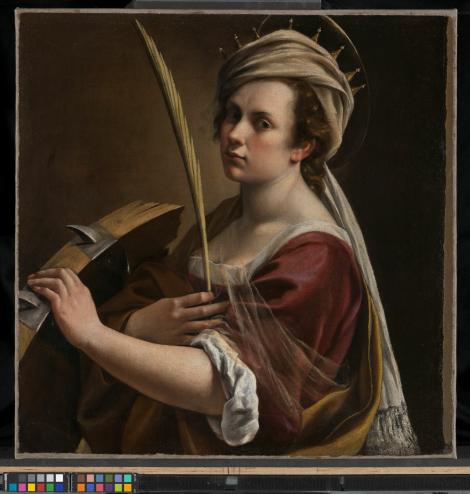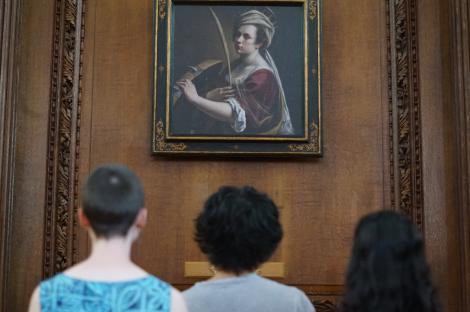
St. Catherine’s unveils pioneering replica of celebrated Artemisia Gentileschi portrait
The Self Portrait as Saint Catherine of Alexandria now takes pride of place at St Catharine’s College Chapel.
CN: Sexual assault and torture
17th century painter Artemisia Gentileschi’s The Self Portrait as Saint Catherine of Alexandria, now takes pride of place above the altar at the St Catharine’s College Chapel.
The National Gallery has made use of a combination of cutting-edge technology and traditional restoration methods to replicate the original, painted in Florence circa. 1615-17, to an exceptionally high standard.

Artemisia Gentileschi (1593–1654 or later) Self Portrait as Saint Catherine of Alexandria, Circa. 1615–17 (Image Credits: The National Gallery, London)
The process involved a specialist flatbed printer and an X-rite Exact Spectrophotometer, used to create six increasingly honed colour proofs to capture the hue, value and chroma of those used in the original work.
The National Gallery’s framing team then sourced Lombard Poplar wood, treating it with Gesso di Bologna, red bole, casein paint and gold leaf applied with traditional mordant gilding.
The replica took eight months to create and was commissioned as a gift to St Catharine’s by alumnus Garrett Curran, where it will now hang above the altar at the College Chapel, replacing a a smaller oil painting of a portrait of Saint Catherine of Alexandria by an unknown, 17th century North Italian artist, which will be moved to the College’s Senior Common Room.

Reproducing the canvas with a flatbed printer (Image Credits: King & McGaw)
Professor Sir Mark Welland, Master of St Catharine’s, commented, “This gift is especially meaningful for us because Artemisia Gentileschi chose to present herself as our patron saint, who continues to be venerated by not only scholars but also women and girls facing violence and persecution – a cause that is close to our hearts as demonstrated by the College’s ongoing partnership with Cambridge Women’s Aid.
“Considering the trauma and difficulties that the artist is renowned for overcoming, we will cherish this opportunity to marvel at her rare talent and resilience some 400 years on.”
Indeed, the replica is significant not only as a symbol of ground-breaking art-history and restoration, but also of the struggle faced by women throughout history, and the uniquely potent outlets found to come to terms with and overcome it.
At seventeen, Gentileschi was raped by fellow artist Agostino Tassi, who was eventually convicted after a lengthy trial, during which Gentileschi testified and endured physical torture.
The Self Portrait as Saint Catherine of Alexandria, veils shadows of the tragic story of the artist’s own past and persecution, behind the martyred saint. She leans on a broken wheel; an instrument of the saint’s torture, and a palm front is held as a paintbrush, fusing the experiences of the painter to that of her subject.
Keenly aware of the power held in the majesty of this work and the story sealed within the brushstrokes, experts at the National Gallery were eager to share this extraordinary work with a wide and appreciative audience.
Dr Gabriele Finaldi, Director of the National Gallery, stated, “…it is clear that the College shares our high regard for the original artwork, and it has proven to be a hugely supportive partner over the last eight months.”

St Catharine’s students with the reproduction in the College’s Chapel (Image Credits: St. Catharine’s College)
Indeed, these sentiments of admiration and awareness for the works of Gentileschi and the potency they hold, seem to be shared by the entire St. Catherine’s community.
Nadia Lines, undergraduate student at St Catharine’s, commenting , “It is not only a reminder of the barriers women have faced and continue to face in accessing opportunities, including education, around the world, but also a testament to our ability to push forward and create great art in the face of injustice.”
Postgraduate student Frey Kalus added that, “The portrait reminds us of the truly radical nature of our namesake and encourages us to treasure the values of intellectual freedom, integrity and feminism.”
Feature Image Credits: St. Catharine’s College, The National Gallery London, King & McGaw









































